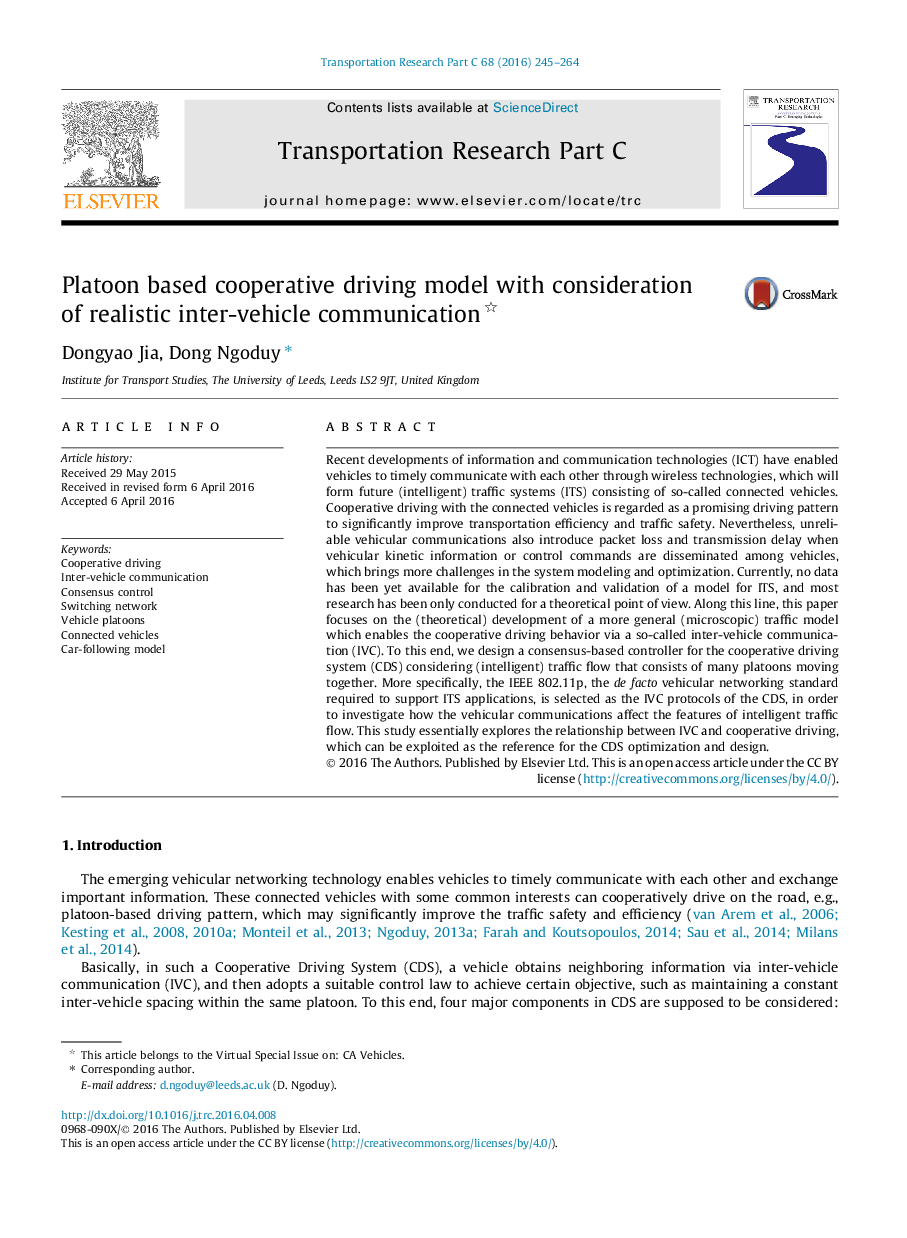| Article ID | Journal | Published Year | Pages | File Type |
|---|---|---|---|---|
| 6936360 | Transportation Research Part C: Emerging Technologies | 2016 | 20 Pages |
Abstract
Recent developments of information and communication technologies (ICT) have enabled vehicles to timely communicate with each other through wireless technologies, which will form future (intelligent) traffic systems (ITS) consisting of so-called connected vehicles. Cooperative driving with the connected vehicles is regarded as a promising driving pattern to significantly improve transportation efficiency and traffic safety. Nevertheless, unreliable vehicular communications also introduce packet loss and transmission delay when vehicular kinetic information or control commands are disseminated among vehicles, which brings more challenges in the system modeling and optimization. Currently, no data has been yet available for the calibration and validation of a model for ITS, and most research has been only conducted for a theoretical point of view. Along this line, this paper focuses on the (theoretical) development of a more general (microscopic) traffic model which enables the cooperative driving behavior via a so-called inter-vehicle communication (IVC). To this end, we design a consensus-based controller for the cooperative driving system (CDS) considering (intelligent) traffic flow that consists of many platoons moving together. More specifically, the IEEE 802.11p, the de facto vehicular networking standard required to support ITS applications, is selected as the IVC protocols of the CDS, in order to investigate how the vehicular communications affect the features of intelligent traffic flow. This study essentially explores the relationship between IVC and cooperative driving, which can be exploited as the reference for the CDS optimization and design.
Keywords
Related Topics
Physical Sciences and Engineering
Computer Science
Computer Science Applications
Authors
Dongyao Jia, Dong Ngoduy,
